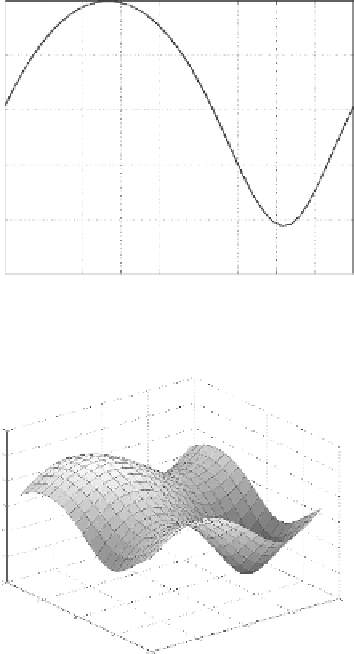Digital Signal Processing Reference
In-Depth Information
4.8
4
3.5
3
2.5
2
0
20
40
60 80
Rotational angle
(a)
100 120 140 150 180
6
5.5
5
4.5
4
3.5
3
200
150
200
150
100
100
50
50
0
0
(b)
FIgure 4.20
Performances of (a) 1 × 1 SISO, (b) 1 × 2 SIMO, (c) 2 × 2 MIMO as the same
antenna position, and (d) 2 × 2 MIMO as the separated antenna position while the receiving
antenna is rotating on plane
y-z
.
is minimized if they are mismatched. In
Figure 4.20c
, when the antennas have been
rotated to nearly the same position, high correlation is produced. Subsequently, the
channel capacity is reduced even if the polarizations are correctly matched. However,
it has better performance in the situation of polarization diversity when the antenna
rotation has the difference of 90°. Moreover, we observe the MIMO capacity with spatial
diversity as illustrated in Figure 4.20d, where the antenna correlation is reduced and the
channel capacity is improved.
In order to achieve a better transmission performance, the polarized antenna selection
can exploit together all diversity techniques, such as pattern, spatial, and polarization
diversity. Pattern diversity should be employed when a large angle spread is detected.
Spatial diversity could be exploited when a high antenna correlation is observed.

Search WWH ::

Custom Search